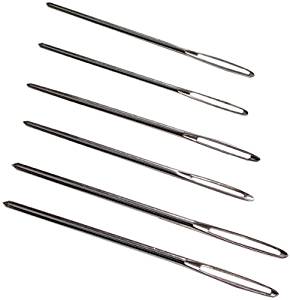Crochet is defined by Dictionary.com as “needlework done with a needle having a small hook at one end for drawing the yarn through intertwined loops.” It originated in 1840-1850 from the French word crochet and is probably of Scandinavian origin.
Crochet History
Crochet most likely developed from the ancient form of embroidery known as “tambouring.” This was a technique in which fabric was stretched tight on a frame. The working thread was held behind the fabric. A needle with a hook was inserted down through the fabric to draw up a loop of the thread. While keeping the loop on the hook, the needle was inserted a little farther along to draw up another loop. This second loop was worked through the first loop forming a chain stitch.
In the late 18th century the fabric was discarded forming what the French called “crochet in the air.”
Crochet Tools
- In the United States, crochet hooks range in size from B-1 to U. B-1 is the smallest size and U is the largest size. These crochet hooks are made from aluminum, steel, plastic, bamboo, wood and glass. The handles are normally small in a size that matches the crochet hook size. They can be found with ergonomic handles or even have a light attached. They can be purchased separately as needed or as sets. The choices are up to you.

- Yarn needles are used to work in the ends of the yarn when a piece is completed. They are, also, used to sew more than one crocheted piece together. The eye of the needle should be large enough to easily thread the yarn being used.

- Stitch markers are helpful as place holders especially if you are working in the round. It is easy to lose track of where the beginning and end of the round is without the markers. These markers can be plain or as fancy as you like. I have even used safety pins as stitch markers.

- Any type of scissors can be used to cut the yarn. If traveling with the crochet project, small scissors that fold up are helpful.







